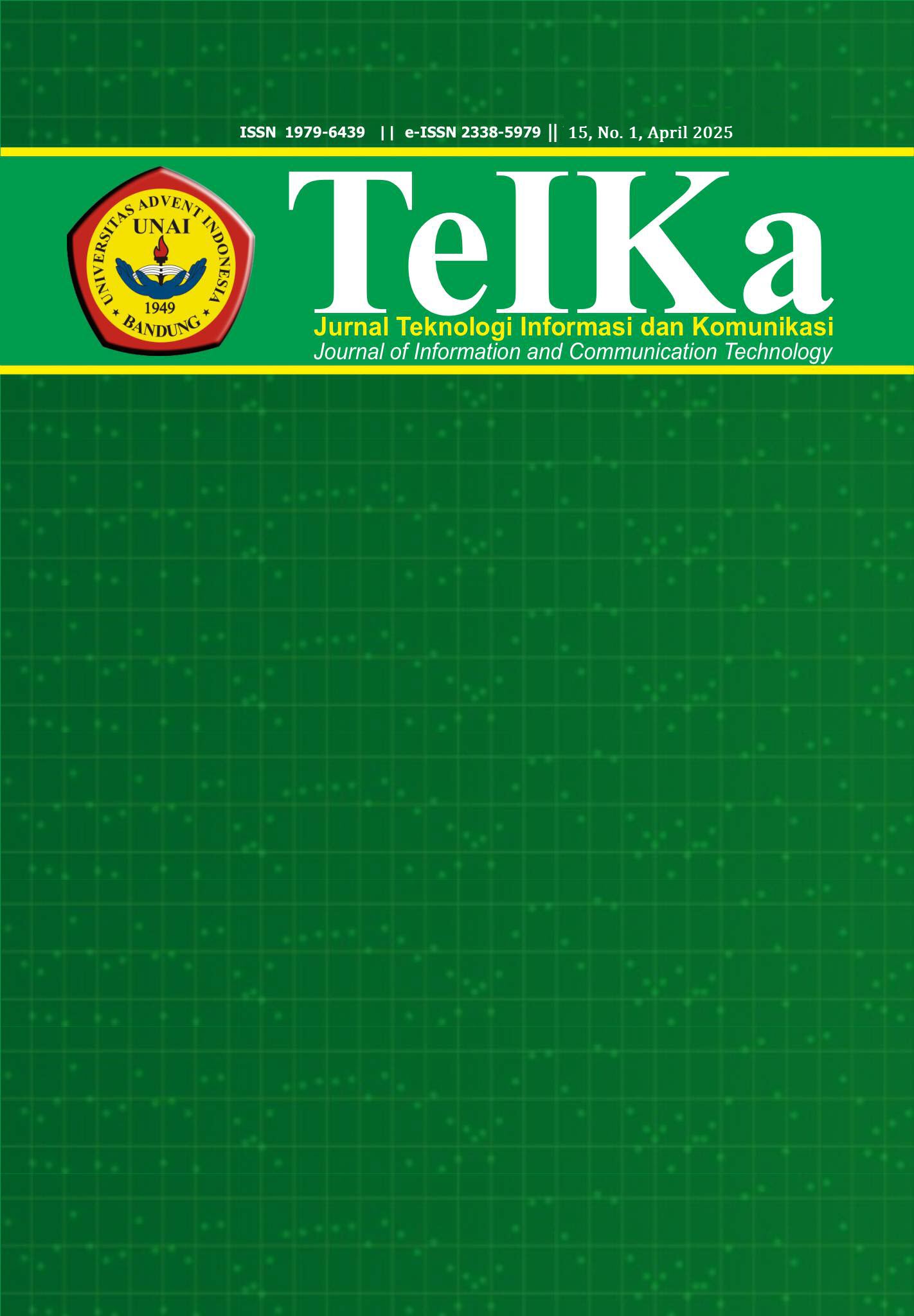Application of Naive Bayes Algorithm as a Decision Support System in Determining Car Selection for Online Drivers
Keywords:
Naive Bayes, Desicion Support System, Online Driver, Car SelectionAbstract
In the application-based transportation industry, selecting the right vehicle for an online driver is a crucial factor in enhancing operational efficiency and income. The choice of a suitable vehicle is influenced by various factors, such as fuel efficiency, maintenance costs, purchase price, passenger capacity, and safety features. This study employs the action research method, starting from the planning stage to the evaluation stage. Meanwhile, the data processing method used to determine the most suitable vehicle for online drivers, based on the predefined criteria, applies the Naïve Bayes algorithm. The Naïve Bayes algorithm was chosen for its ability to classify data with high accuracy and its fast and efficient computational process. The results of this study indicate that out of 5 test data, 4 results matched the predictions, while 1 result did not. These findings demonstrate that the system can provide vehicle recommendations to online drivers with an accuracy rate of 80%, thereby assisting prospective drivers in making well-informed decisions.
Downloads
References
I. D. Rizqi, R. Wardhani, and M. R. Zamroni, “Implementasi Algoritma Naive Bayes pada Sistem Pendukung Keputusan Rekomendasi Wisata di Lamongan,” Semin. Nas. Teknol. Sains, vol. 3, no. 1, pp. 15–22, Jan. 2024, doi: 10.29407/stains.v3i1.4078.
A. U. Kurnia, A. S. Budi, and P. H. Susilo, “SISTEM PENDUKUNG KEPUTUSAN PENERIMAAN BEASISWA MENGGUNAKAN METODE NAIVE BAYES,” Joutica, vol. 5, no. 2, p. 397, Sep. 2020, doi: 10.30736/jti.v5i2.484.
D. Anisa, W. S. Ningrum, R. Kusumo, and W. Putri, “Sistem Pendukung Keputusan Penerimaan Beasiswa Menggunakan Metode Weighted Product,” TIN Terap. Inform. Nusant., vol. 2, no. 8, pp. 483–491, 2022, doi: 10.47065/tin.v2i8.1064.
R. Retnosari and S. Nusa, “ANALISIS KELAYAKAN KREDIT USAHA MIKRO BERJALAN PADA PERBANKAN DENGAN METODE NAIVE BAYES,” J. PROSISKO, vol. 8, no. 1, 2021.
Y. Bismo Utomo, M. S. Anam, H. Kurniadi, and A. Rachmad, “PENERAPAN ALGORITMA MOORA DALAM MENENTUKAN DOSEN PEMBIMBING TUGAS AKHIR YANG TEPAT,” 2024.
R. H. Febriyanti and H. Sundari, “Pelatihan Penulisan Artikel Ilmiah Dengan Metode Action Research Berbasis Daring,” J. PkM Pengabdi. Kpd. Masy., vol. 5, no. 6, p. 618, 2023, doi: 10.30998/jurnalpkm.v5i6.11737.
Ana Zahrotul Nafiah, Anas Ma’ruf, Nur Avivah, Wafi Faqih Ahmad Al Ghozali, and Rela Mar’ati, “Pembuatan Media Pembelajaran Al-Qur’an Ramah Lingkungan di TPA Miftahul Ulum Dusun Pohjenggel Desa Katikan Kecamatan Kedunggalar,” J. Abdikarya Pembang., vol. 1, no. 2, pp. 1–10, Jun. 2023, doi: 10.53627/jap.v1i1.4826.
S. Rif’ah, “Jagung Betiring Pemberdayaan Masyarakat Berbasis Potensi Lokal Dengan Metode Participatory Action Research (PAR),” Particip. J. Pengabdi. Masy., vol. 1, no. 2, pp. 98–114, Oct. 2022, doi: 10.58518/paritcipatory.v1i2.1836.
H. F. Putro, R. T. Vulandari, and W. L. Y. Saptomo, “Penerapan Metode Naive Bayes Untuk Klasifikasi Pelanggan,” J. Teknol. Inf. dan Komun., vol. 8, no. 2, Oct. 2020, doi: 10.30646/tikomsin.v8i2.500.
D. Erwanto and Y. Bismo Utomo, “Image Extraction of Lettuce Leaves using Fast Fourier Transform Method and Color Moments,” 2022. [Online]. Available: http://jurnal.unmer.ac.id/index.php/jeemecsjeemecs@unmer.ac.id
Y. B. Utomo and G. W. Harsanto, “Penerapan Metode Certainty Factor Dan Naïve Bayes Untuk Mendiagnosa Penyakit Akibat Gigitan Nyamuk,” Gener. J., vol. 4, no. 2, 2020.
F. Dwiramadhan, M. I. Wahyuddin, and D. Hidayatullah, “Sistem Pakar Diagnosa Penyakit Kulit Kucing Menggunakan Metode Naive Bayes Berbasis Web,” J. Teknol. Inf. dan Komunikasi), vol. 6, no. 3, p. 2022, 2022, doi: 10.35870/jti.
Downloads
Published
How to Cite
Issue
Section
License
Copyright (c) 2025 TeIKa

This work is licensed under a Creative Commons Attribution-ShareAlike 4.0 International License.
The submitting author warrants that the submission is original and that she/he is the author of the submission together with the named co-authors; to the extend the submission incorporates text passages, figures, data or other material from the work of others, the submitting author has obtained any necessary permission.
Articles in this journal are published under the Creative Commons Share Alike Attribution Licence (CC-BY-SA What does this mean?). This is to get more legal certainty about what readers can do with published articles, and thus a wider dissemination and archiving, which in turn makes publishing with this journal more valuable for you, the authors.
By submitting an article the author grants to this journal the non-exclusive right to publish it. The author retains the copyright and the publishing rights for his article without any restrictions.









